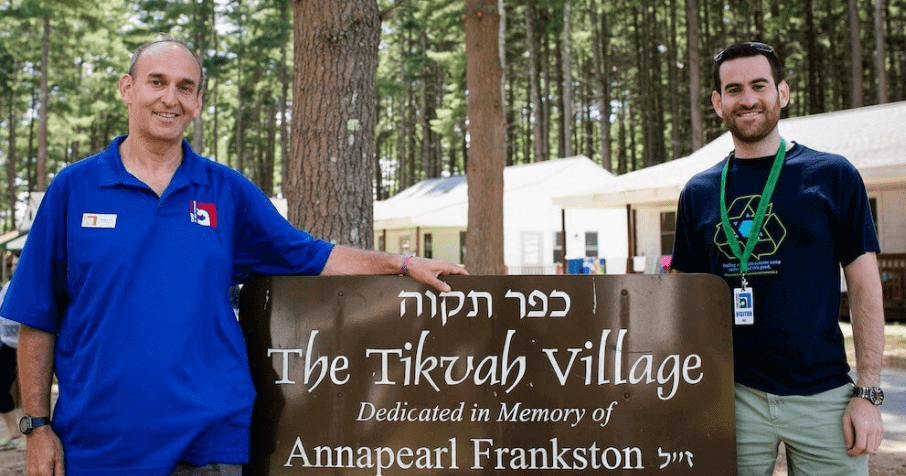Original Article Published On The Jerusalem Post
It’s the Wednesday afternoon before the Shabbat of my student’s bar mitzvah. Jake has been working hard for the past hour and a half, quietly reading his sermon and loudly belting out songs as Cantor Lisa Hest accompanies him on the guitar.
Jake is a young man with a range of special needs, and when his parents consulted me about his bar mitzvah, they’d told me they might wait until he was 15 and more mature. When I met him, however, it was obvious that his love of music, his good ear and his determination would make a bar mitzvah at 13 possible and special.
Now, with three days to go, Mom, Dad and sister Emily are assembled at the synagogue for the dress rehearsal. “Dress” may be slightly overstating the case. Jake is wearing his New York Yankees T-shirt and tallit and has a bare head. Emily, fresh from soccer practice, is wearing her gym shorts and her “Em’s Bat Mitzvah” T- shirt from her own celebration three years ago; I came in shorts, T- shirt and Teva sandals. Only Jake’s mother, in slacks and a white button-down shirt, and his dad, in a suit, dress shirt and yellow power tie, are dressed for the occasion.
As Cantor Lisa is packing up her guitar for her next gig, I open up the Torah scroll for Jake and Emily to practice. Just then, I look up to see two men at the entrance of the synagogue. It’s 7pm and I’m exhausted. But the two linger at the entrance, so I go over to see if I can help. The hasidic men, one 70 and the other 30- something, both wearing black frocks, black hats and payes, smile and say that they simply wanted to see the shul.
The synagogue that intrigues them is the 88th Street building of Congregation B’nai Jeshurun on Manhattan’s Upper West Side – a Conservative congregation that uses an electric piano on Shabbat, adds the Matriarchs to the amidah prayer, and offers joint aliyot to gay couples as they come to the Torah in celebration of their brit ahavah commitment ceremonies. The exquisite sanctuary building is only used for Friday night and special Shabbat minhah services. When the roof of the 88th St. building collapsed over 13 years ago, the synagogue began renting space from the Church of Saint Paul and Saint Andrew on West 86th Street on Shabbat mornings, for the larger crowds the congregation now attracts.
Many religious Jews will not enter a non-Orthodox synagogue (let alone a church). Why had these two ultra-Orthodox men wandered in to BJ at precisely this moment, when a boy with special needs and his immodestly dressed sister are about to read from the Torah? The visitors move closer to the ark and listen as Jake begins to read. The older gentleman points to his own head, kindly requesting that Jake put a yarmulke on his head. Emily rushes to the bin and brings skullcaps for Jake and Dad. I explain to the guests that Jake is celebrating his bar mitzvah this Shabbat. They listen for a moment as Jake reads from the Torah, smile, and leave.
Rewind 13 years. Following Jake’s birth, he underwent a series of surgeries and long hospitalizations. During one hospital stay, he shared a room with a little girl from a Brazilian Lubavitch family. Each day, men would come so the baby’s father could pray in a minyan. One day, an older man asked Jake’s mother if she was Jewish. She said she was. He asked if she lit Shabbat candles. She replied that she did not. She then offered that her husband was not Jewish, but that they were raising the children Jewish.
The man asked, “Did the boy have a bris?” She explained that he did not, but that he had an in-hospital circumcision. “Do you have a mezuzah up on your door?” he asked. “No,” said the mother. “Can I bring you one tomorrow, a real mezuzah with a kosher scroll inside?” “That’s very nice, but, thankfully, we are leaving the hospital tomorrow.” “Can I mail it to you?” “Absolutely.”
Several hours after Jake and family came home from the hospital, the phone rang. “I happen to be in your neighborhood,” a voice said. “Would it be OK if I drop off the mezuzah and put it up?” Minutes later, two men appeared at the door. The parents, both in shorts and T-shirts, greeted the guests. “I brought along a mohel,” the man said. “He would like to perform a ceremonial bris, if it’s OK with you.” The sleep-deprived parents agreed. “Any wine in the house?” the mohel asked. “No.” “Any alcohol?” “There’s a beer in the fridge.” “Get it.”
The rabbis finished the ceremony, put up the mezuzah, and promised to go to the Lubavitcher rebbe to offer a prayer for them. They left, as swiftly as they had entered.
These mystery men may not have been the same curious visitors to BJ. Then again, why not? See you at the wedding.



